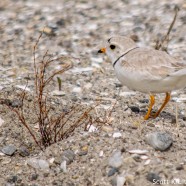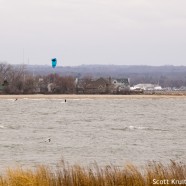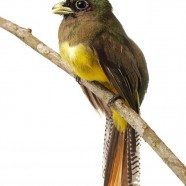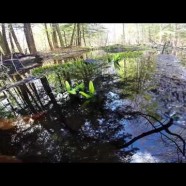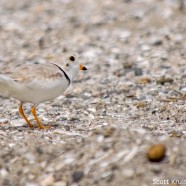Piping Plovers
Amazingly there were still pairs of Piping Plovers coming into Connecticut through the end of April. New arrivals hit the breeding grounds as other birds were beginning to nest, and finally we look to be really into “go time” for our soon to be parents. After a lot of cool weather and wind we are into May where we should have a safe buffer from the freezing mark. Let us hope we have conducive incubation conditions and stable weather for our continuing efforts in the Audubon Alliance for Coastal Waterbirds.
Read MoreUnintentional Disturbances Threaten Waterbirds
There are a number of activities that can unintentionally scare, disturb or even threaten the survival of our waterbirds throughout the spring and summer seasons. Even a person with good intentions can fail to realize how sensitive a bird like the Piping Plover is, feeling threatened by dogs on the leash as they still see them as a predator invading their territory, making birds more prone to abandoning the area, wasting valuable energy or separating them from eggs or young, increasing mortality. Most beaches in Connecticut ban all dogs during the warm seasons in consideration of public...
Read MoreBlack-throated Trogon (Trogon rufus)
This is a Black-throated Trogon (Trogon rufus), and a transition male that is close to full adult breeding plumage. Even more amazing than catching this individual was discovering a nest soon after! For a week our crew got to watch a male incubating two eggs at eye-level. It was using an abandoned woodpecker nest cavity as its nest. Photographed by RTPI Affiliate Sean Graesser for the Meet Your Neighbours global biodiversity project in Costa Rica while on assignment for the Roger Tory Peterson Institute of Natural History with The Marvelwood School.
Read MoreProductive Vernal Pools
Have you ever wondered what might be hiding just beneath the water’s surface in these temporary pools that crop up in early spring? This little clip reveals a productive vernal pool that has a number of spotted salamander (Ambystoma maculatum) egg masses nestled within the leaf litter of the pool floor. These pools are an important breeding area for several amphibian species, as you can see, because they provide a safe fish-less environment for the eggs and eventual tadpoles to...
Read MorePiping Plovers in the Sand
This warm week has jump started breeding as Piping Plover pairs are getting much more focused on nesting, making scrapes and exhibiting soon to be parents behavior on some Connecticut beaches. Our Audubon Alliance for Coastal Waterbirds crew is wrapping up helping the Connecticut Department of Energy and Environmental Protection in placing string/psychological fencing and signage on major beaches and busy breeding areas. We will soon be assisting them in placing exclosures over Piping Plover nests to protect the precious eggs from predators on the ground (cats, raccoons, foxes and coyotes)...
Read More



